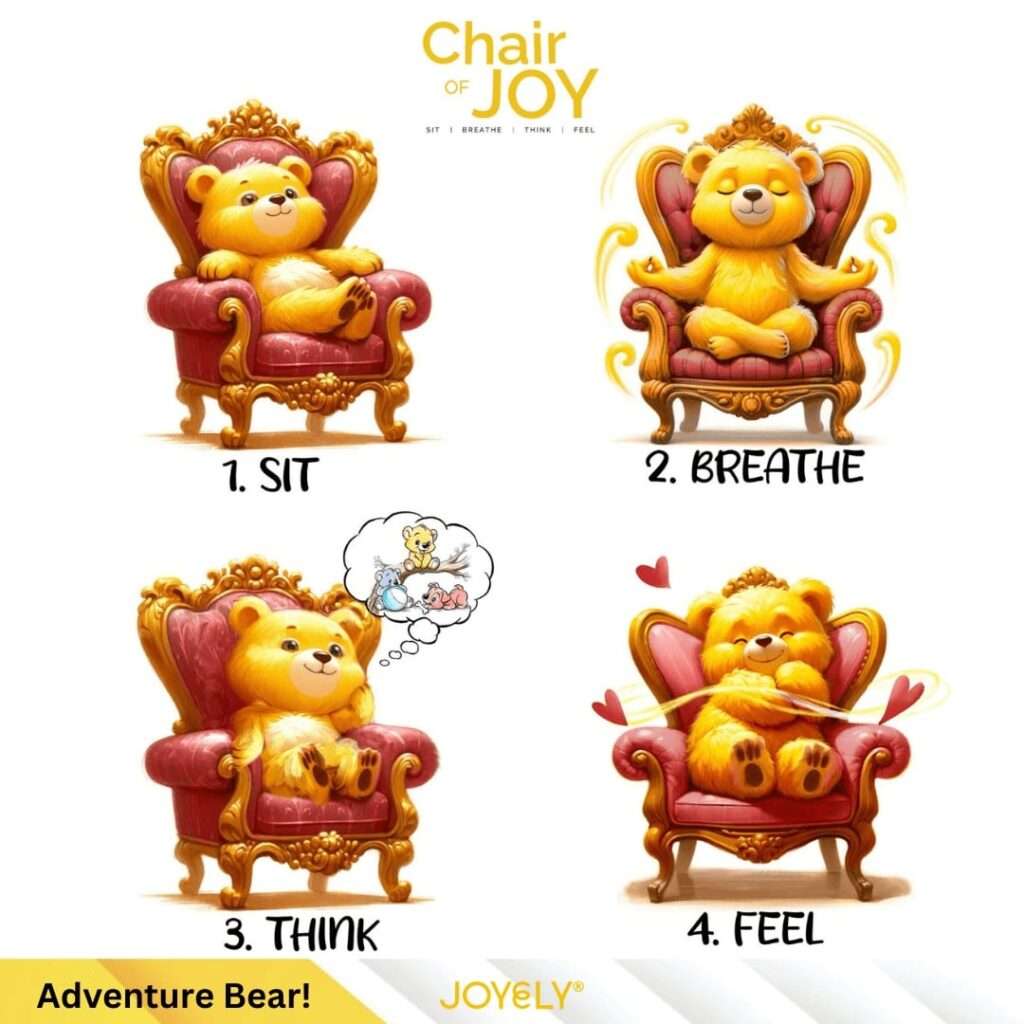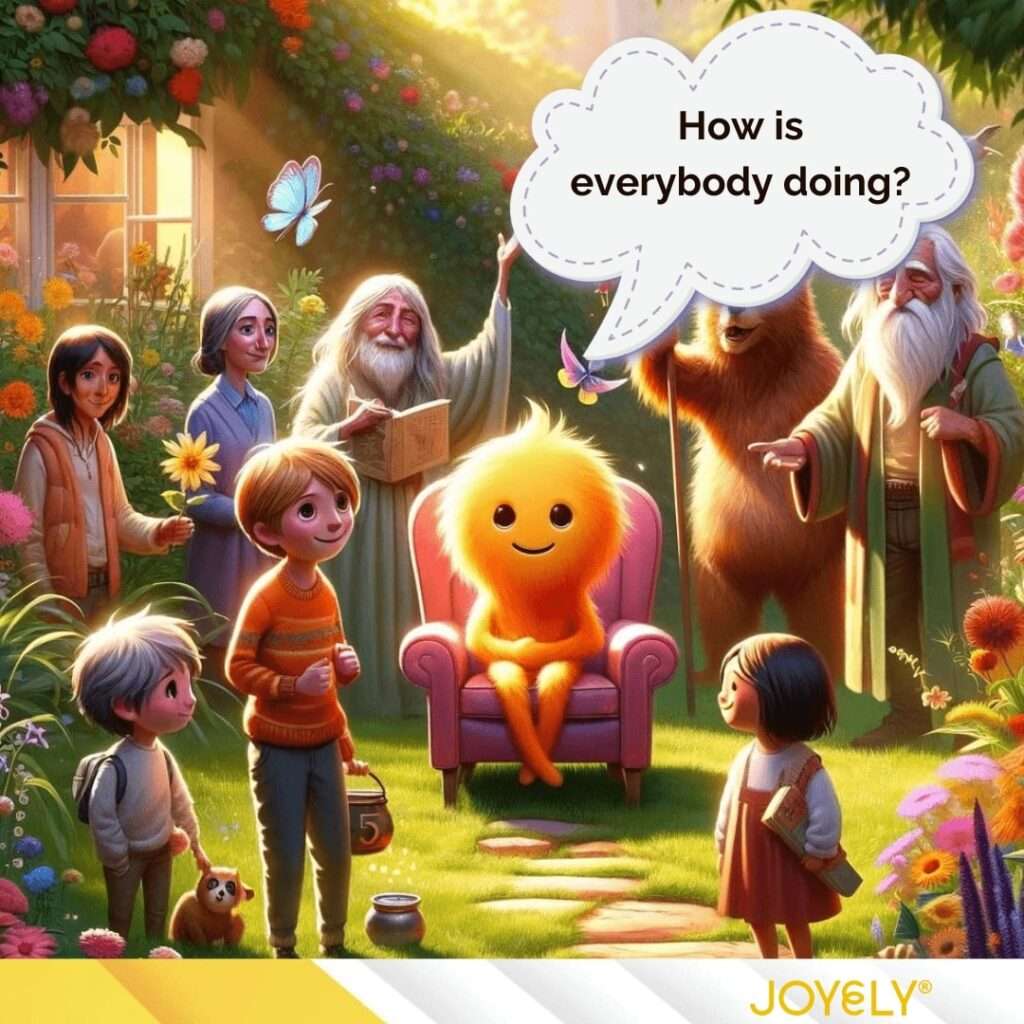Elmo’s innocent inquiry opened the floodgates to thousands of responses, painting a vivid picture of the collective mental state of his audience. From heartwarming to heart-wrenching, the feedback was a stark reminder that many are far from “doing well.”
In a world where we’re bombarded with stories of conflicts, hunger in Gaza, and an alarming number of mass shootings in the U.S., it’s easy to become desensitized to the struggles faced by many. Children undergo security checks at school gates, and rigorous safety drills instill a constant sense of fear. Young Americans grapple with substance abuse, alcoholism, and depression amidst a well-documented mental health crisis. It might be stormy outside, and the temperatures may be chilly, but dwelling in a space of doom and gloom is not the answer


Katherine Tarleton, a licensed therapist in South Carolina, highlights the significance of trusted characters like Elmo in creating a safe environment for difficult conversations. However, what stands out in this scenario is not just the sharing of struggles but the awakening to the importance of personal responsibility in managing one’s mental well-being.
The Daily Blast Live commented on the Elmo piece. The broadcasters emphasized that you can’t believe everything you hear and suggested, “Turn your phone off. If you’re taking 10 seconds to comment on Elmo, that’s 10 seconds you could have spent doing something else!”
While it’s true that we can’t always fully comprehend the depths of someone’s emotions, especially those rooted in fear, and getting therapy right away may not always be feasible. However, while we are waiting for our Friday appointments, I suggest you start listening to your answers when someone asks you a simple question: “How are you doing?” What is your typical answer? Is it this:
Occasionally, someone catches us off guard with a unique response, as was the case with a young man I recently asked, “How are you doing?” His enthusiastic reply was, “It’s exhilarating! People are emerging, and the energy is absolutely fantastic.”
This is where JOYELY’s Chair of Joy™ Experience comes into play. It’s time to turn that frown upside down, and it can happen in as little as 60 seconds. The Chair of Joy™ Experience isn’t just a physical seat; it’s a metaphorical space where individuals can put a wrench in the way they always respond and come up with a new, purposeful answer. It encourages people to pause, reflect, and reconnect with their sources of joy.
Instead of waking up and focusing on aches and complaints, how about dedicating 60 seconds to trying something new? Use your body’s brain-heart connection to elevate your mood and encourage something positive to emerge from your mouth.


Each time you engage in activities that challenge your mind and body, such as utilizing the principles of neuroplasticity, you’re actively reshaping your brain’s neural pathways. By incorporating the concept of the Chair of Joy into your daily routine, you introduce a new narrative into your thought processes. This practice, rooted in neuroscience, has the potential to benefit individuals of all ages, including beloved characters like Elmo on Sesame Street.
Sitting in the Chair of Joy, focusing on your breathing, engaging in positive thinking, and tuning into your emotions aligns with the principles of mindfulness and emotional regulation. These practices have been scientifically proven to enhance mental well-being. Over time, this daily ritual can empower individuals to cultivate a positive mental space by rewiring their neural connections and promoting a more optimistic outlook.
In essence, the Chair of Joy is not just a metaphorical concept; it’s a practical application of neuroscience that can positively impact personal responsibility for mental health, making it accessible to both young and old alike.
JOYELY promotes the universal language of joy, creating connections based on shared experiences of happiness and well-being. When characters like the JOYELY Adventure Bear even children can embrace joy and mental health, they pave the way for meaningful conversations that help alleviate the sense of isolation many feel.
So when Elmo asks you next time, “How are you doing?” take a moment to respond, “Let me check.” Gain awareness of how you truly feel, and instead of echoing the common responses, try a moment of Chair of Joy Experience. Your answer might be surprising: “I feel calm; I have a handle on today. Maybe I don’t have it all figured out, but I have courage. I was depressed yesterday, but now I feel a sense of hope.”
Imagine Elmo sitting in his Chair of Joy, symbolizing the simple yet profound act of taking personal responsibility for our mental well-being. This image is more than just a snapshot; it’s a powerful reminder of the importance of pausing, reflecting, and finding joy in our daily lives. As Elmo demonstrates, making space to connect with our feelings and thoughts is crucial in a world filled with challenges.
Think if some of the diverse and beloved characters took a stand for our current state of mental health by being the first to embrace the Chair of Joy™ Experience. A few notable candidates come to mind. First and foremost, Elmo, who kicked off this conversation for us, the friendly and inquisitive red monster from Sesame Street, already is leading the way with his boundless curiosity and infectious optimism. SpongeBob SquarePants, the eternal optimist from Bikini Bottom, could also find solace and joy in the Chair of Joy, bringing his sunny disposition to new heights. Winnie the Pooh’s gentle and reflective nature makes him another prime candidate for embracing the Chair of Joy. Furthermore, the whimsical and imaginative Alice from Wonderland, the empathetic Paddington Bear, the ever-curious Curious George, the wise and contemplative Yoda from Star Wars, the adventurous Dora the Explorer, the hopeful Cinderella, and the resilient Mulan could all benefit from the Chair of Joy Experince, each offering their unique perspectives and qualities to this heartwarming endeavor.
In essence, it is our responsibility as humans to think for a moment about our answers when Elmo asks, “How are you doing?
Mastering the vast array of emotions within us, encompassing both positive and negative, is an incredible journey that hinges on personal responsibility. This voyage began with Elmo’s straightforward question: “How are you doing?” Keep in mind that, according to Dr. Robert Plutchik’s research, we may be harboring up to 34,000 distinct emotions, each vying for its time within our bodies, brains, and cells. The key lies in nurturing the emotion of joy and employing techniques that guide us back to experiencing more of what we desire. By doing so, we can reignite our desires, passions, and dreams. So, “How are you doing?”
It’s time to immerse ourselves completely in the conversation of joy, to prioritize it above most things.. There’s no time to wait; it’s a matter of life and death.
Your Answer Matters!


We invite you to share your valuable experience. Your feedback not only guides future guests but also illuminates our path towards excellence. Please take a moment to leave a review and help shape our journey forward.



Welcome to JOYELY, where JOYELY Ever After is not just a dream, it’s our lifestyle.
© 2024 JOYELY. All Rights Reserved.